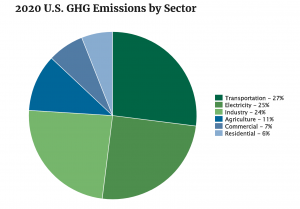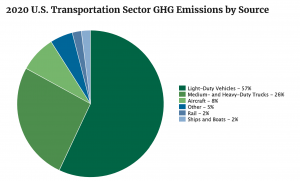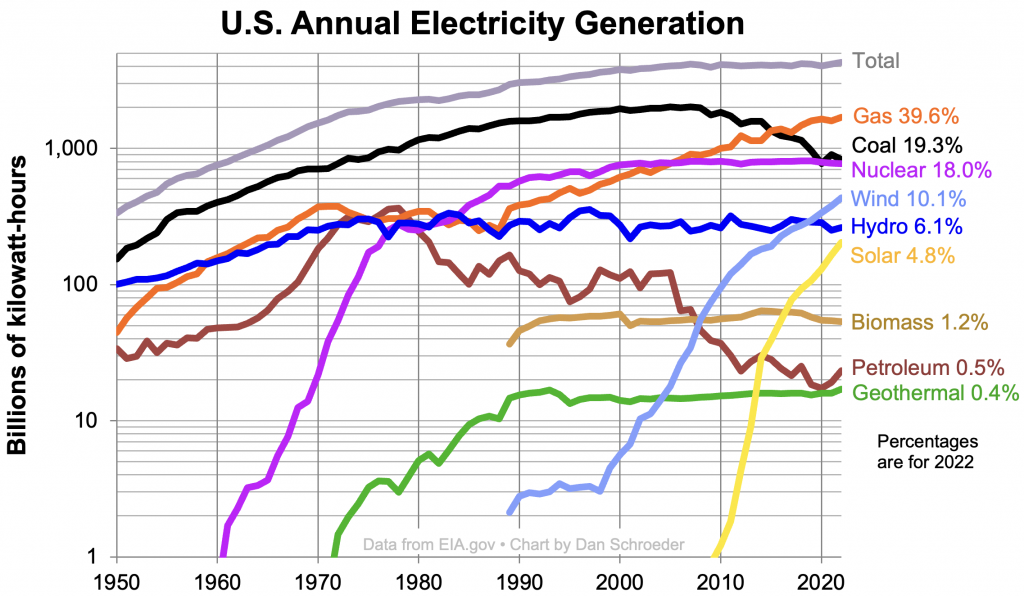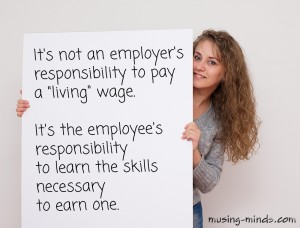52 Photos – Week 37


Push For Electric Vehicles
Updated below:
The Administration is pushing for 2/3 of all new vehicles to be electric by 2032 starting in Model Year 2027 which is only a few model years away. This year is Model Year 2024. Vehicle manufacturers have designed and are building the 2024 models to start selling and delivering in September. They’ve already started showing them at the big auto shows in Detroit, Chicago, New York, Atlanta, and more.
The EPA and the Administration are moving far too fast with the push. It’s all fine and dandy to say that they want 66% of all vehicles to be electric by 2032 but they aren’t looking at any other variables. At least they don’t seem to be.
They say that they’re going to reduce carbon and pollution. The EPA states that transportation is the largest source of greenhouse gasses in the US and cars are the largest part of that. Transportation is 27% of the total by sector. Cars (light-duty vehicles) are 57% by source. Another sector of greenhouse gasses is Electricity. That one is 25%. Change that 57% of the Transportation sector and add it to the Electricity Sector. Because you have to generate the electricity to charge the batteries for the electric cars.


So, your Transportation Sector is now 12% and your Electricity Sector is 40%.
You’ve cut off the bottom of the blanket and resewn it to the top.
Electric vehicles in a city reduce exhaust pollution. It does make it more pleasant for the people in the city. But the electricity has to come from somewhere. Coal, natural gas, and petroleum provide the fuel to generate power in 60% of the plants in the United States. Nuclear provides another 18%. The remaining comes from the so-called “renewables” hydroelectric (6.1%), geothermal (0.4%), biomass (1.2%), solar (4.8%), and wind (10.1%). Some of these, such as hydro and geothermal, are geographically locked. You can’t have a hydro plant in the middle of the desert. Solar and wind are also geographically limited. Windmills require areas where the wind blows consistently. Solar requires areas where the sun shines on more days than it doesn’t. Wind and solar farms can’t go just anywhere.
In order to reduce the 60% of power plants fueled by coal, natural gas, and petroleum they’ll have to be replaced by nuclear plants which aren’t as geographically limited. Solar and wind aren’t going to reduce or replace the coal- and gas-powered plants. Even though there was a reduction in coal-powered plants, they were replaced by gas-powered plants, not “renewable”-powered plants.

Wind creates unrecyclable waste when the huge fiberglass blades are disposed of. The masts are steel and can be recycled. Solar panel recycling is under study in the US and isn’t commercially viable at this time so they go in landfills unless someone can reuse or refurbish and reuse them.
Then there’s the infrastructure. The administration touts the addition of many EV charging stations they are nowhere near as plentiful as gas stations. They may be counting on people charging their vehicles at home – but that requires that people install the proper home charging station which can require permitting in your location. It will also require a licensed electrician for installation. And, if you have more than one vehicle, you may require more than one charging station. This also adds to your monthly electric bill.
That’s if you’re a homeowner of a single-family home or maybe a semi-detached home. If you are in a multifamily family building or are a renter that’s a whole other ball of wax. Who pays the building’s electric bill? How will EV charging be billed? Are parking spaces assigned? Will they be? Will a condo association purchase pay-as-you-go charging stations or establish a contract with one of the established companies? The same questions can be asked of landlords and apartment buildings. There are some apartment complexes that are quite large with hundreds of units. How will they provide charging units?
How much will rents rise because of this?
Electric cars are more expensive than internal combustion engine cars. If an electric car loses power due to its battery dying it’s dead. It needs to be towed to a charging station and you have to wait until it’s charged to go anywhere else. If an ICE car runs out of gas someone can bring by a gas can with a gallon or five and you and your car can get to a nearby gas station and fill up in under 15 minutes and be on your way. Oh, and if the battery in your ICE car dies, it’s generally a matter of a jump start to get it going again and it will recharge while you’re driving. Replacement cost for the battery for an ICE car is generally under $150 and for an EV it can cost half the cost of the car itself.
Range is still longer with an ICE and refills are still shorter. Most of the EV charging stations are still Level 2 which is the slower charging. A Level 2 charger can charge an EV from empty to full in FOUR to TEN hours. Granted, you don’t want to be on empty on a road trip, but this necessitates more frequent stops for longer periods to keep your EV charged up. The DC Fast Chargers can charge to 80% in 20 minutes to an hour. Twenty minutes is a little more comparable to a visit to an interstate gas station with fill-up and snack and restroom break, but I’d guess that’s an outlier and the visits are more likely in the middle of the 20- to 60-minute range.
Update: Motortrend magazine has a real-world article about charging time for an EV vehicle…
Their Ford F-150 Lightning said it would take a little over an hour to go from the 13% (30 miles range) they were at to an 80% charge. This was at a 7-Eleven and one of their own branded 7Charge Fast Chargers. Their 80% brought them up to 227 miles of range and was 87.619kW of electricity at $0.59/kW for a total of $51.70. They also spent another $33.41 on drinks and snacks at the 7-Eleven while they were waiting for the truck to charge. That extra expense was, of course, completely unnecessary and not an actual part of the vehicle charge.
Our Chevy Silverado 1500 (similar-sized ICE) would have taken about 10 minutes including snacks and cost ~$60 for a 100% fill-up with a ~435-mile range.
Lithium mining to obtain the main component for the batteries for the EVs creates its own problems even if it can be startlingly beautiful.

So, as I said earlier, the EPA and Administration have decided to push for a mostly electric fleet of new cars starting in three model years to reach that goal by 2032 but they haven’t looked at the other variables. They decided and that’s that.
The United States Senate
Apparently, it’s time to discuss the United States Senate and how it works. Again.
Yesterday, Eric Swalwell (D-CA) tweeted this:
I don’t know where he’s getting his 2,000 senators over the next 250 years from. There are still only two per state as it has been since the inception of the country. We started with 26 (two for each of the 13 States) and we now have 100 (two for each of the States). This Valentine’s Day will mark the 110th anniversary of the 48th state, Arizona, being admitted to the union. The final two, Alaska and then Hawaii, were admitted on January 3 and August 21 of 1959 respectively.
Does he see in that a trend that will add 1,000 states over relatively the same period of time? Also, the House has been limited to 435 members since 1929 and the Permanent Apportionment Act. Where would he put 2,000 Senators and the however many added House members?
Or, as is more probable, does he think that the Senate is or should be based on the population like the House of Representatives is. There are many, many people who are under this misapprehension.
So let’s go over it. The Constitution of the United States, Section 3 deals with the Senate.
The Senate of the United States shall be composed of two Senators from each State, chosen by the Legislature thereof, for six Years; and each Senator shall have one Vote.
The phrase chosen by the Legislature has been changed by the 17th Amendment to the Constitution.
The Senate of the United States shall be composed of two Senators from each State, elected by the people thereof, for six years; and each Senator shall have one vote. The electors in each State shall have the qualifications requisite for electors of the most numerous branch of the State legislatures.
When vacancies happen in the representation of any State in the Senate, the executive authority of such State shall issue writs of election to fill such vacancies: Provided, That the legislature of any State may empower the executive thereof to make temporary appointments until the people fill the vacancies by election as the legislature may direct.
This amendment shall not be so construed as to affect the election or term of any Senator chosen before it becomes valid as part of the Constitution.
The States gave up power when they ratified the 17th Amendment on April 8, 1913, nearly a year after it was passed by Congress on May 13, 1912. It’s also confused a lot of people into thinking that the Senators work for the People instead of for the States.
This is an important distinction because the House of Representatives, the People’s representatives, the people who vote for the popular stuff, vote for the, well, popular stuff. Stuff that brings money back to their districts, money for their constituents, the “free” stuff.
But a lot of that popular stuff comes along with strings. The Federal Government (your taxes) will pay for some of that stuff or will pay for that stuff for a certain period of time but then the State has to pick up the rest. But the promise was for the whole thing. For example, the Federal law says 10 years of Medicaid funded at a certain level but the Fed funding will actually be for four years and the State has to fund it for the final six.
The Senate is supposed to take a look at things like this and say, whoa! Wait a minute! Let’s take a step back and rethink this. Maybe we don’t want those strings. Maybe we don’t want to accept this. During Obamacare Ben Nelson of Nebraska got wording placed in the bill to have Nebraska’s share of the expansion of Medicaid covered for his cloture vote. That Cornhusker Kickback was eventually removed. But Nelson did at least try to represent the State’s interests.
Electoral College
When people get confused over the Senators they get confused over the Electoral College as well. They think that smaller states are “over-represented” because they have three electoral votes versus the larger states that have more. They’ll take the population of the state, divide by the number of electors and show that the quotient of the population of the small state divided by three is smaller than the quotient of the larger state divided by the larger number of electors.
Except that that’s not how it works. That’s not how any of this works. Each and every state gets one elector for every Senator. Two for every State. There’s your two. Every state gets one for each of its House Members (Congressional Districts). One hundred electors are divided evenly between the states and 435 electors are divided by population between the states. Just like both Chambers of Congress. It’s not now and never has been divide 535 by population. It’s always been two separate groups.
A few years ago (before CA lost Representatives) someone said it wasn’t fair that Alaska had three Electoral Votes for ~740K people and California had 55 Electoral Votes for ~39 million people. They said that 740,000/3 was 246,667 and 39,000,000/55 was 709.090 so there were like, two times as many people per Electoral Vote in California and it wasn’t FAIR!
Except… Alaska’s EV per Population is ~740,000 and EV per State is 2. And (at the time) California’s 39,000,000/53 = ~735,849 and that’s pretty close to Alaska’s ~740,000 and they still have their 2 State EVs so pretty even.
The Constitution says that “each State shall have at Least one Representative” so a couple of smaller states (WY, VT) may have a very slight population/representative ratio advantage but it’s really negligible.
Journalists and Fact-checking
Earlier today there was a press conference in Las Vegas regarding one or more lawsuits to be filed regarding dead people voting, people who don’t live in Clark County voting in Clark County, and they had an older woman with them who said that when she went to vote she and her roommate were told that they had already voted. She said someone had taken their mail-in ballots and used them. Nevada mailed ballots to everyone whether they asked for one, or not.
After the press conference, David Asman on Fox News was commenting that they were making a lot of allegations but providing no proof at the press conference and that they should have to the journalists. That giving the journalists the proof was necessary. That the journalists were the fact-checkers.
Yes, David. Journalists are fact-checkers. Journalists should go and check the facts as given to them. Not just demand proof at a press conference — which doesn’t seem to happen at all press conferences — but go and independently check the facts as given.
Go and find out if there are instances of the “dead” voting. Go and find out if people who no longer reside in Clark County are recorded as having voted in Clark County. Go and find out if people were turned away at the polls as having already voted when they hadn’t.
THAT is fact-checking, not just getting something from the people who are holding the press conference.
Impeachment

Don’t Talk to the FBI















